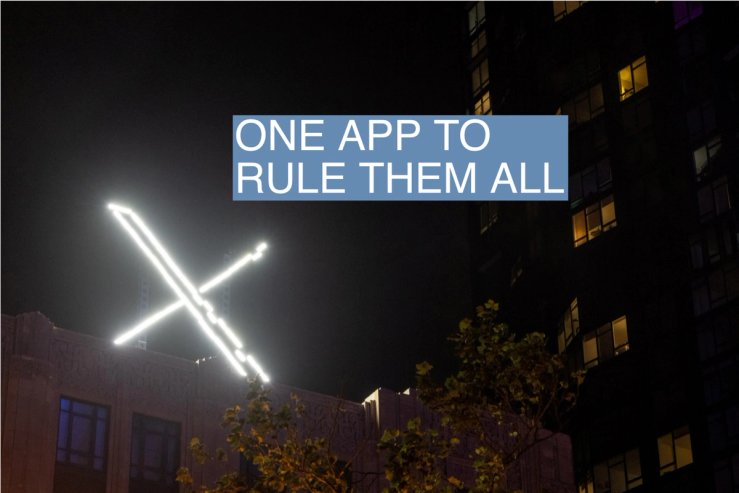The Scoop
The company formerly known as Twitter is seeking a financial-data giant to build a trading hub inside the app, according to a request for plans viewed by Semafor and people familiar with the matter.
“Real-time information is a powerful force, especially in the world of investing,” reads the request, which was sent to big providers in recent weeks asking for proposals for financial content, real-time stock data, and other features.
What X is offering: the ability to reach “hundreds of millions of highly-qualified users.” What it isn’t: any compensation. The request tells interested bidders to say how much money they’ll commit to the project themselves. It isn’t clear which firms, if any, submitted proposals, which were due last week.
Owner Elon Musk has said he sees X as the first Western super-app, similar to WeChat in China, Gojek in Indonesia, Grab in Singapore, and Gozem in Africa, which offer a mix of consumer services such as food delivery, ride-hailing, payments, investing, and even identity authentication in a single app.
“You basically live on WeChat in China,” Musk said at a company town hall last year. A Swiss army knife set of tools could boost the app’s users from 237 million to at least a billion, he said.
Twitter (its name then) rolled out a limited offering this spring based on its “cashtag” feature, where, for example, a user searching $GM is served a live stock chart, powered by TradingView, a data startup. The company told potential bidders that cashtag clicks have grown 51% over the past two months.
A one-click option to buy and sell stocks on eToro, a Robinhood competitor for the day-trader set, was supposed to launch in April but has yet to materialize. Referring users to a brokerage could bring in money for X, which is still trying to win back advertisers that fled after Musk’s takeover.
Other U.S. social-media companies have tried to bind users with payments, savings, and e-commerce, and all have failed. Snapchat shut down its payments feature, Snapcash, in 2018, and Meta sold its similar venture, known first as Libra and then as Diem, for parts last year. (It has done better with payments on WhatsApp.)
TradingView declined to comment. X didn’t respond to a request for comment.
After publication, Musk tweeted: “No work is being done on this to the best of my knowledge.”
A representative for eToro said: “X is an increasingly important part of the DIY investing community... We are hugely excited to see how X will develop and are in close contact with the team around future projects.”
In this article:
Liz’s view
“Twitter’s real-time, public platform has become the heartbeat of the financial community,” the request for proposals reads.
There was a moment when that was true, or at least sort of true. In the late 2010s, Twitter feeds held real financial value as a gauge of public sentiment and a source for breaking news. In 2018, Bloomberg — the epitome of the walled-garden, proprietary model — started integrating tweets into a feed for algorithmic traders.
Another 2018 headline, this one in Forbes, highlighted a startup mining Twitter mentions of Netflix and Nike for clues about earnings. Former U.S. President Donald Trump’s ability to move markets with a tweet reinforced social-media’s role in finance for high-frequency traders seizing on momentary price blips.
And there was, of course, the meme stock craze of 2021. Organized mobs on Reddit and, to a smaller degree, Twitter, swarmed comically out-of-favor stocks like GameStop and Bed Bath & Beyond, driving their prices higher and squeezing Wall Street firms that had bet against them.
But like much of the social web, that moment feels over. Platforms don’t drive the conversation — or traffic — that they used to. (My boss, Ben Smith, wrote a whole book about this.) And more broadly, conventional forces in finance are reasserting themselves.
Musk’s buyout of Twitter itself is a case in point: He willed an illogical deal into existence on his own brand and the groundswell of his most fervent acolytes, then ran into the buzzsaw of basic financial math. X is worth a third of what it was last fall, according to Fidelity, which owns a chunk, and faces huge interest payments.
There’s also the matter of whether enough users trust Musk, and X, with their financial data.
And that assumes that the West even needs a super-app, or that finance needs to be a big part of it. Developing economies where that model has worked tend not to have robust, trusted banking systems. Their financial behaviors were formed in a mobile-first, decentralized world.
In other words, they skipped the part where X would have to retrain consumers and unseat banks’ own apps, which are quite good, and credit-card networks, which are quite entrenched.
To the extent anyone can pull it off, my money has always been on Amazon, which is pretty good at most everything it does, has a natural tie-in to people’s spending habits, and is established in payments. (If you think of unused gift cards as deposits, it’s the 230th largest U.S. bank.)
Room for Disagreement
Musk is still the ultimate memelord, and the most active and committed users of the platform will almost certainly be those who believe in him and his vision. A smaller, dedicated audience is as good as a larger, less-engaged one to potential partners. If anyone can channel whatever animal spirits still animate the madding crowd, it’s Musk.
Notable
- Substacker Timothy Motte on why super-apps aren’t one-size-fits-all.


